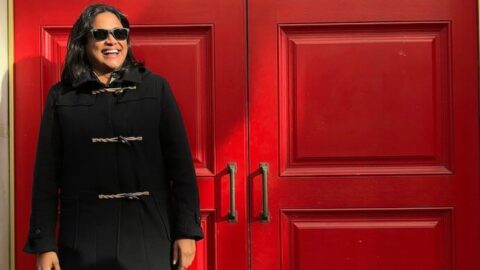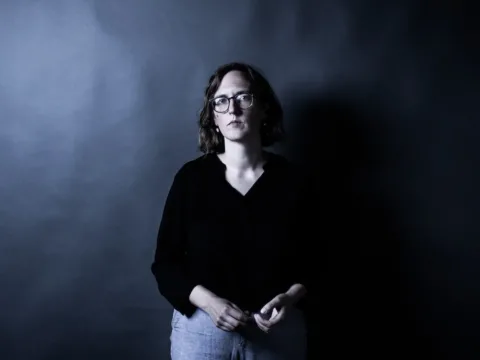OBEY Convention in K’Jipuktuk/Halifax, Nova Scotia enters its 12th iteration May 30-June 2, 2019. OBEY prides itself on curating a festival of challenging, exploratory sonic art, with this year’s lineup ranging from hardcore punk outfit Frail Hands to minimalist Mary Jane Leach, from chill-soul group Strange Froots to ethnomusicologist and pianist/kanun player Sanaz Nakhjavani. This year, OBEY is expanding its vision by beginning a new Composer-In-Residence program, selecting trumpet player, composer, and improvisor Nicole Rampersaud as its inaugural recipient. She’ll be creating a new work for multiple improvising performers and field recordings, developed specifically for Paul O’Regan Hall in Halifax’s Central Library.
Congratulations on being named OBEY Convention’s first Composer-in-Residence! What do you hope that this position will bring to such an exploratory festival?
Thank you for the congrats! I am very honoured to be involved in this year’s OBEY Convention in this capacity. OBEY, like many music festivals, provides a great avenue for artists to share their music with a new and welcoming audience. I see the Composer-in-Residence position as a chance for OBEY to forge new and deeper connections between the local and global music communities, across genre and practice, through providing the space and the time for an artist to engage and collaborate with the local community.
You’re creating a site-specific piece for OBEY, incorporating a number of distinct elements. Can you describe the creative development of this project, from initial vision to its current state?
My initial vision of the project was to include musicians from a diverse background, and to explore the space of Paul O’Regan Hall. Pianist Tim Crofts, percussionist Bianca Palmer, and sound artist Danielle Jakubiak will be involved in the piece, and I am excited to collaborate with them in the weeks leading up to the performance. I have composed a series of solo pieces for each musician to highlight specific aspects of their practice that I admire. The solo pieces I have written for myself focus on ideas I have developed over the past few years. I have also been making a series of field recordings in various parts of the Maritimes to include in the piece.
My current plan is to layer these components, coupled with the acoustics and physical space of the Hall, to produce a composite piece that sonically blurs the line between sound art and composition. Ultimately, it is my hope that the final piece reflects and celebrates the openness, warmth, and generosity of the festival and of the city.

How has experimental improvisation evolved your various creative practices, either directly or conceptually?
Conceptually, I have been most fulfilled focusing on the process of music making rather than on the outcome. As such, my compositions prioritize creating space and parameters that place the process at the forefront. In performance, I continue to work with a diverse and expanding group of musicians who share this same focus, so that I am always growing the pool of experience and influence that I use to explore new connections between creative practices.
Ultimately, both improvisation and experimental music have allowed me to explore different means of expression in my music, as I continue to work on simplifying my message, independent of genre.
Returning to the festival, OBEY prides itself on its diverse roster of artists. What opportunity does this unique lineup provide for the artists and/or the audience?
From an artist’s perspective, it is great to have the lineup–and the schedule where there are no overlapping of performances–validate that you have the space to create the music and experience you want without the pressure of having to fit a specific genre or set of expectations. It also allows you to meet a vast range of artists whose paths don’t necessarily intersect with yours in normal circumstances.
From an audience perspective, OBEY’s propensity for curating a dynamic and varied lineup year after year cuts through the noise and distraction that can come from trying to classify and, in some cases, pigeonhole what is happening in the moment. As a result, you have the space to connect with the musicians and with fellow audience members in a shared experience.
You’ve written on your blog about how you’re drawn to Experimentalism because of its ability to foster inclusion. What lessons does Experimentalism offer to other music or art scenes in their efforts towards inclusivity?
Inclusivity is a big topic to address, and, with several factors and perspectives to take into account, it can be a difficult task to to know where to start. What I can share from my experiences is that through improvisation and experimental music, I have been very fortunate to have worked with a broad range of artists who run the gamut in background, from music, to race, gender, age, and culture, with each experience enriching my creative practices. All of this to say, I think that when it comes to inclusivity, one component of the answer could lie in the balance between holding steadfast to tradition and creating opportunities to humbly meet people where they are both in their artistic journey and in their life.
























